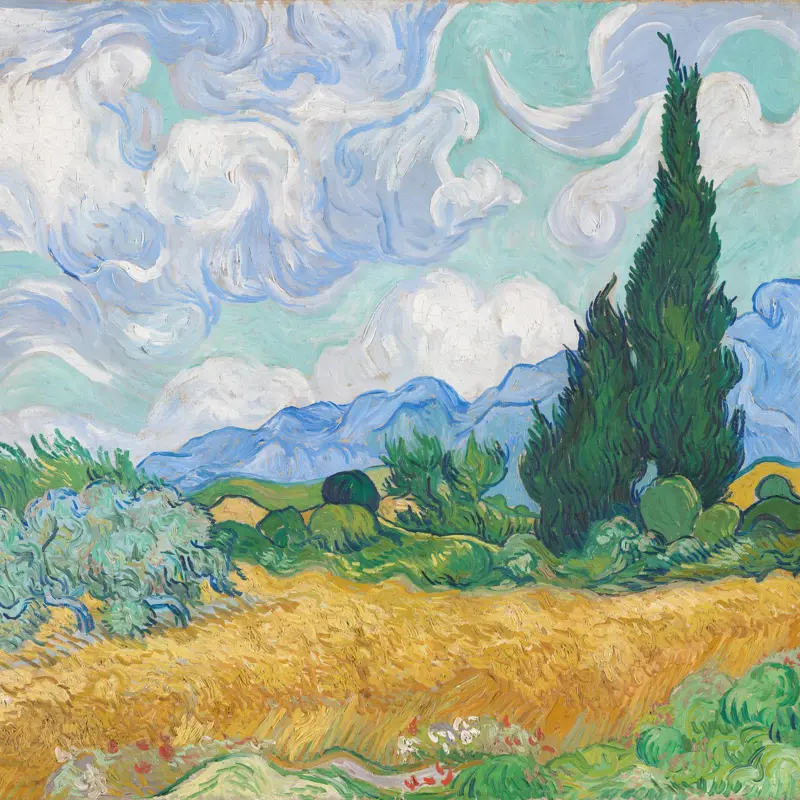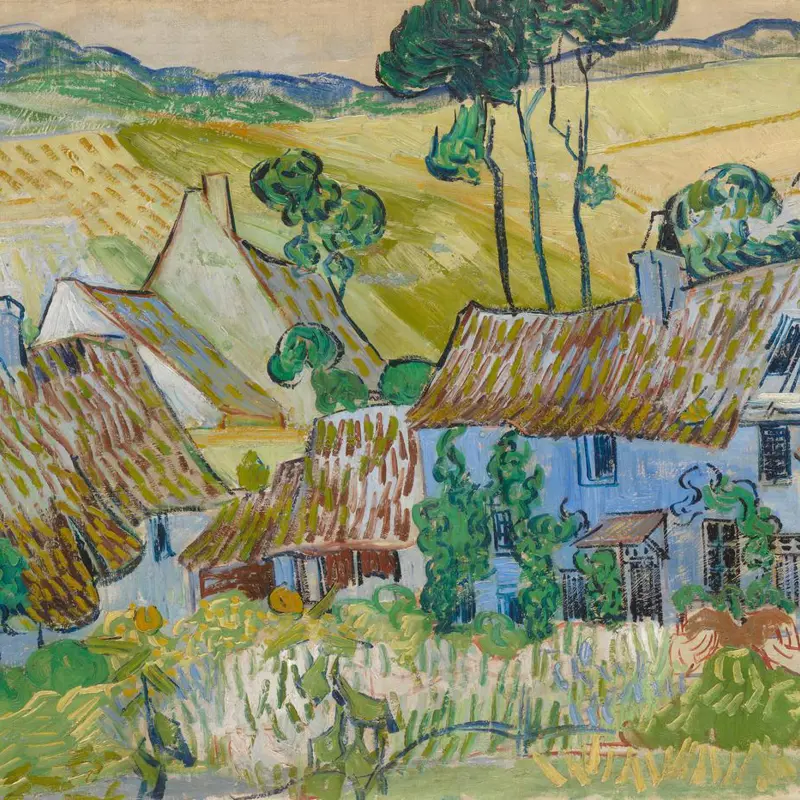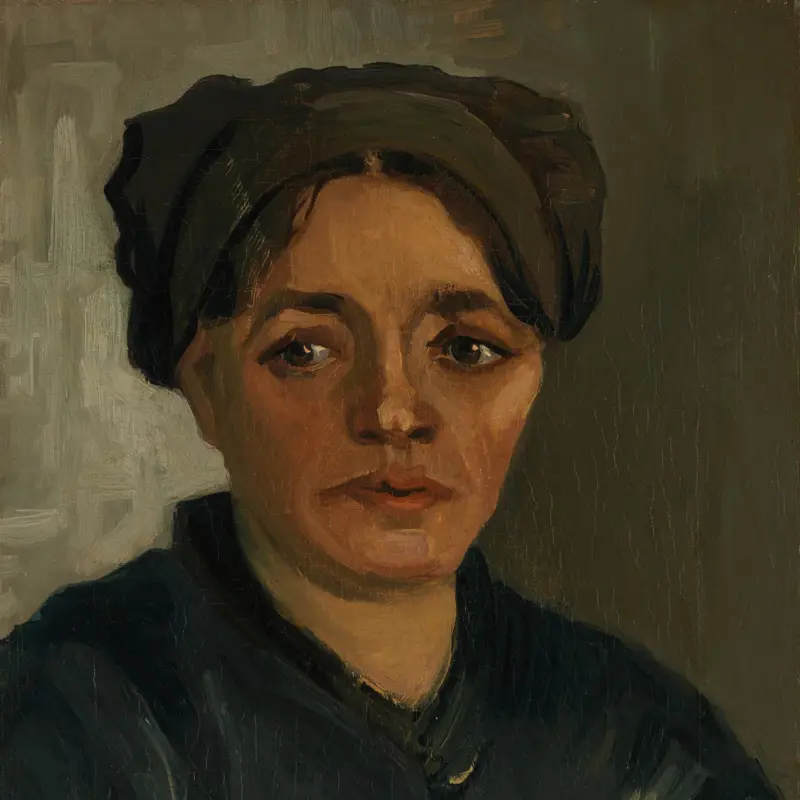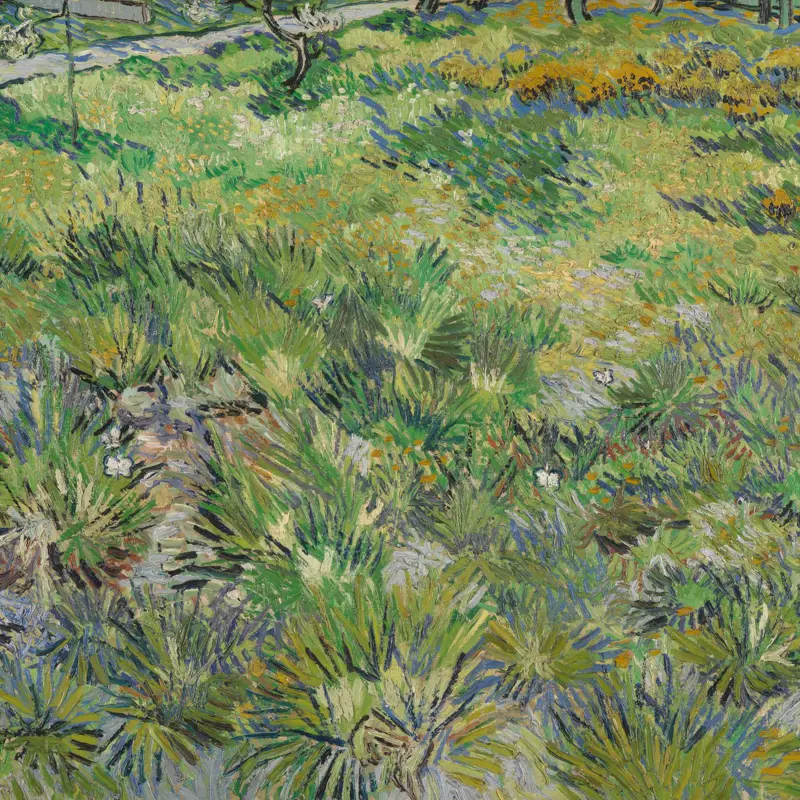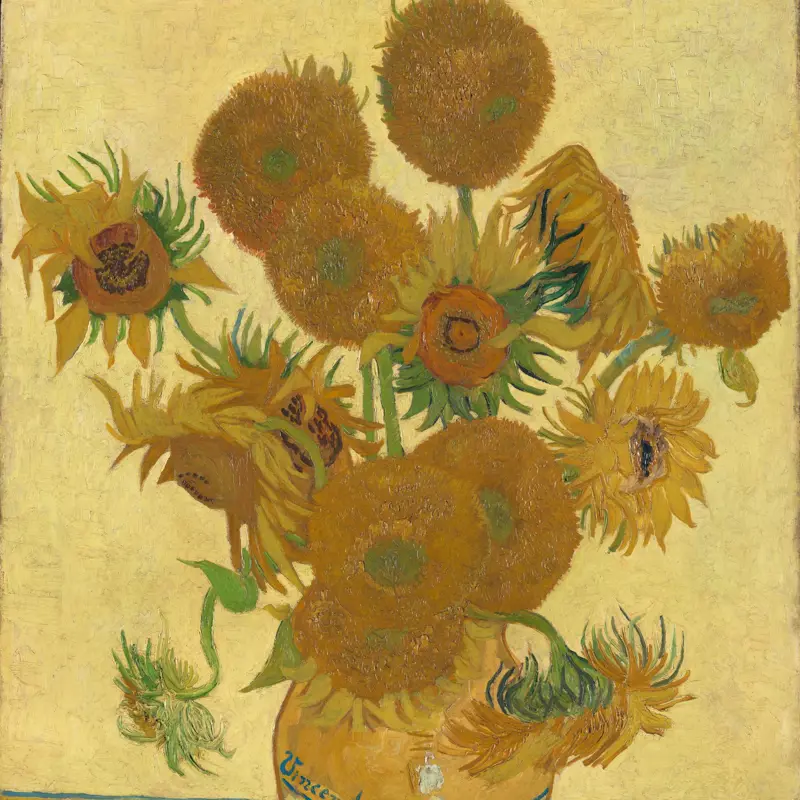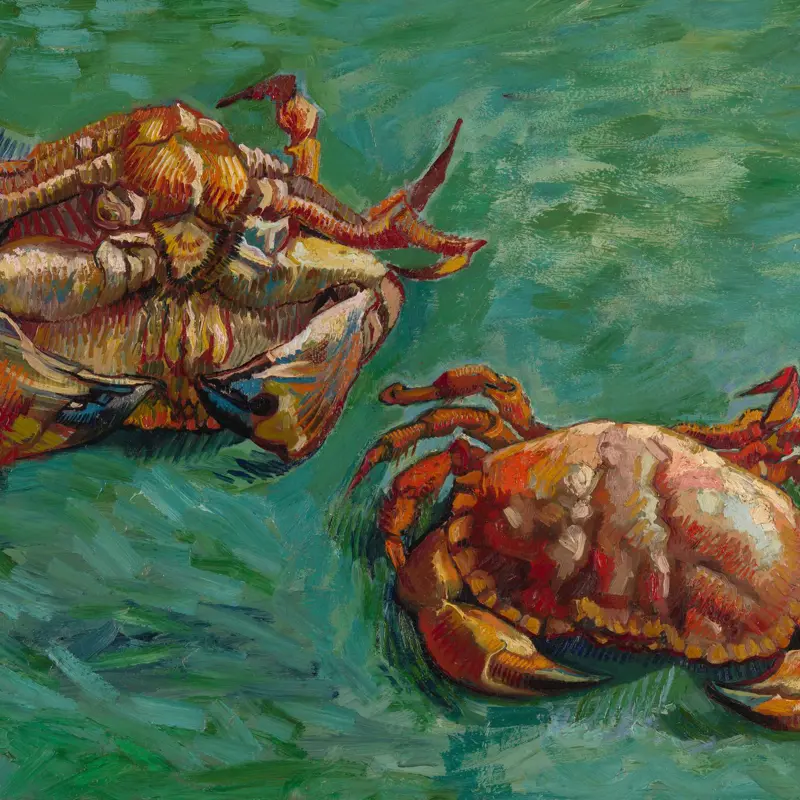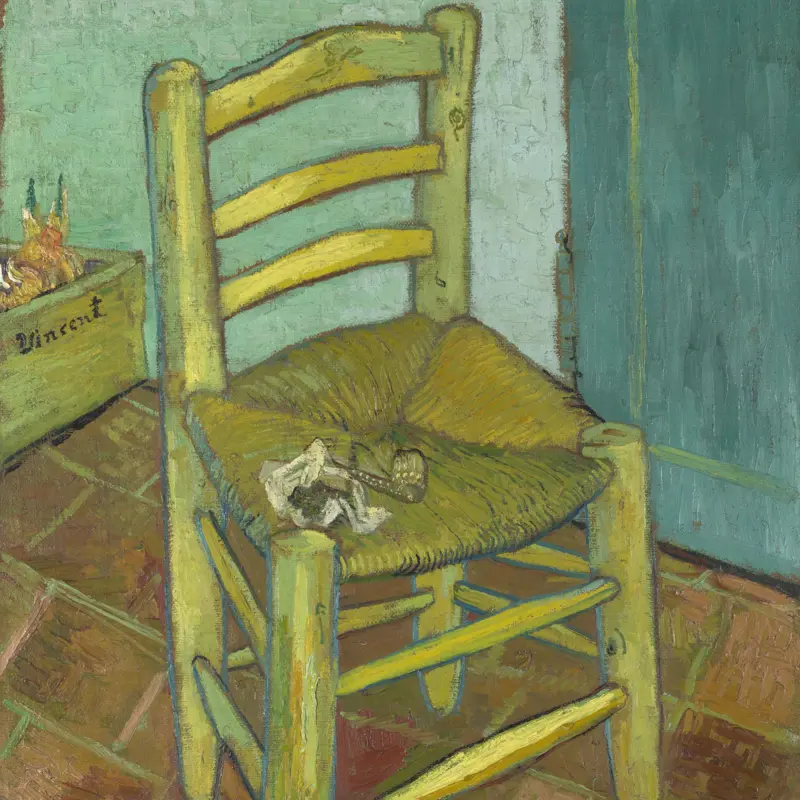After suffering a prolonged period of psychological ill health, Van Gogh admitted himself to a psychiatric hospital in the town of Saint-Rémy, Provence, in May 1889. Prohibited from leaving the hospital grounds without a chaperone, Van Gogh took inspiration from the view he could see at his window: a walled-in wheatfield below, a small hut to the side, and the Alpilles mountain range emerging ahead. The vista formed the basis of this painting and eight others, all completed during Van Gogh’s year-long stay at the hospital, which develop the motif of the enclosed field in states of sunshine, harvest, moonlight, and rain.
Landscape with Ploughman is thought to have been the first work Van Gogh produced after suffering a severe epileptic attack in 1889 which had prevented him from painting. In the August of that year, he wrote a letter to his brother, Theo, saying, ‘yesterday I began to work a little again,’ and included a small sketch of what would become this painting. Typical of Van Gogh’s work at this date, the scene was based on direct observation but laden with personal and aesthetic meaning. The hardworking ploughman, tilling the soil at dawn, becomes a symbol for the artist himself: in October 1889, Van Gogh wrote to his mother, ‘I am ploughing on my canvases as they do in their fields.’ The artist felt deeply about the earth’s natural order – the way its rhythms and cycles are maintained by the harvest – such that the ploughman’s immersion in the landscape comes to represent a celebratory symbiosis between man and nature. That aspects of the painting have an imaginative, perhaps allegorical dimension is also evident in the artistic licence Van Gogh took with the composition: he inserted two trees in the upper left-hand corner and diminished the size of the mountains.
Fields populated by labourers and peasant life more broadly appear throughout Van Gogh’s oeuvre. While some of his earlier paintings engaged with a realist style, such as Peat Boat with Two Figures (1883, Drents Museum, Assen) or The Potato Eaters (1885, Van Gogh Museum, Amsterdam), Van Gogh’s output in Saint-Rémy reveals a more expressive quality and a greater intensity of feeling. In this work, elongated brushstrokes applied at crooked, sloping angles give the impression of an animated and undulating land, while concentric marks around the sun sharpen the power of its light. The muddy earth is rendered in a palette of luminous blues, broken up by yellow farming tracks, as two sets of flowers – visible in dabs of red paint in the bottom right-hand corner and golden additions in the centre – suggest a delicacy within the hardy landscape. The heightened colours and loaded brushwork demonstrate Van Gogh’s increasing recognition that colour and surface had expressive potential, independent of the objects they described.
A few weeks after painting this work, Van Gogh made a variant with the same title (Museum of Fine Arts, Boston), in which a serene blue strip, painted in lighter brushstrokes and more muted tones, replaces the earlier version’s blazing sun and tightly cropped sky. By contrast, the density of paint in the National Gallery loan accentuates the surface of the canvas, allowing us to see part relate to whole, as distinctive individual strokes accumulate into an entire landscape.

